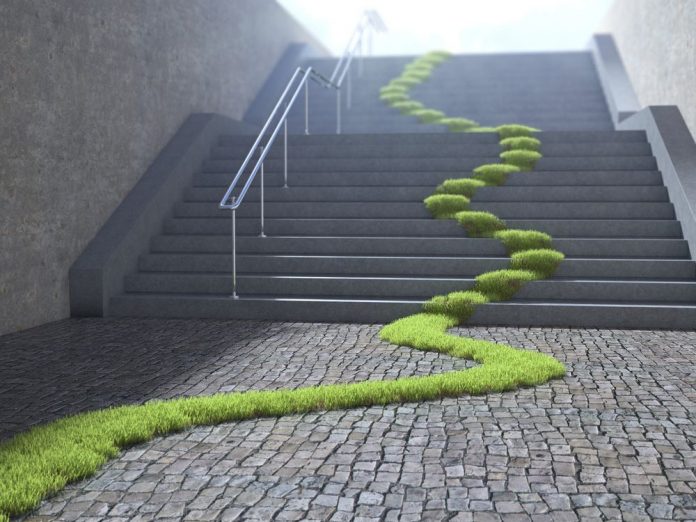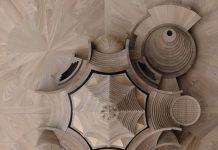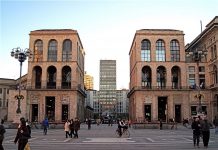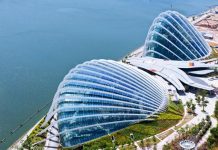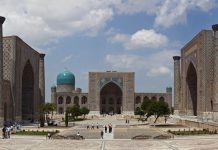Within the existing development of the city, it was decided to preserve the existing street layout with only partial changes. The overall composition of the old and new districts of the city will take the form of a fan opened to the south, having its origin in the old city center on the Neva.
In addition to the main meridian highway of the future Leningrad — the Moscow Highway, the new southern district of the city will connect with the old one along the extensions of Stachek Street, Mayorov Avenue, Dzerzhinsky Street, along the Neva embankments above Smolny and along the Shlisselburgskoe Highway.
The new city center, as mentioned above, will be located at the intersection of the Moscow highway with the main arc highway. It will consist of a number of squares, including a new square designed in front of the already built building of the House of Soviets. The main architectural axis of the square of the House of Soviets is directed along the arc highway.
The ensemble of the Moscow Highway for 700-800 m is solved almost symmetrically with respect to the area of the House of Soviets. The Moscow highway is crossed by diagonal highways: the new Duderhof diagonal highway (north of the square) and the existing Pushkin Highway (south of the square), forming new squares at the intersection with the Moscow Highway — northern and southern. The width of the highway between these areas is projected at 56 m .
The implementation of the Leningrad master plan was reflected in the construction of a new center (Moskovskoe Highway) on the right bank of the Neva River near Malaya Okhta and on the left bank of the Neva River near Shchemilovka; in the construction of the Avtovo district, etc.. In the construction of Leningrad, the task of creating new quarters as integral residential urban ensembles has been practically solved. This was also affected by the difference in construction methods in the period i935—1940 in Leningrad and in Moscow. If in Moscow it took place mainly along highways, then in Leningrad it was conducted by completed complexes of residential quarters.
Just as in Moscow, in Leningrad, in order to implement the master plan, along with housing construction, the construction of schools and other public buildings was carried out and the greening of the city was carried out.

